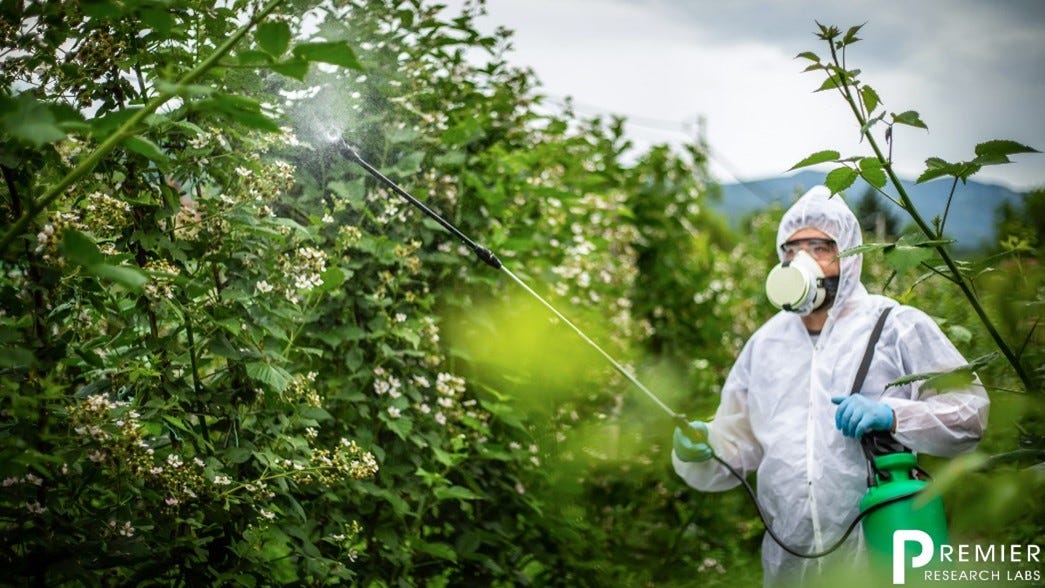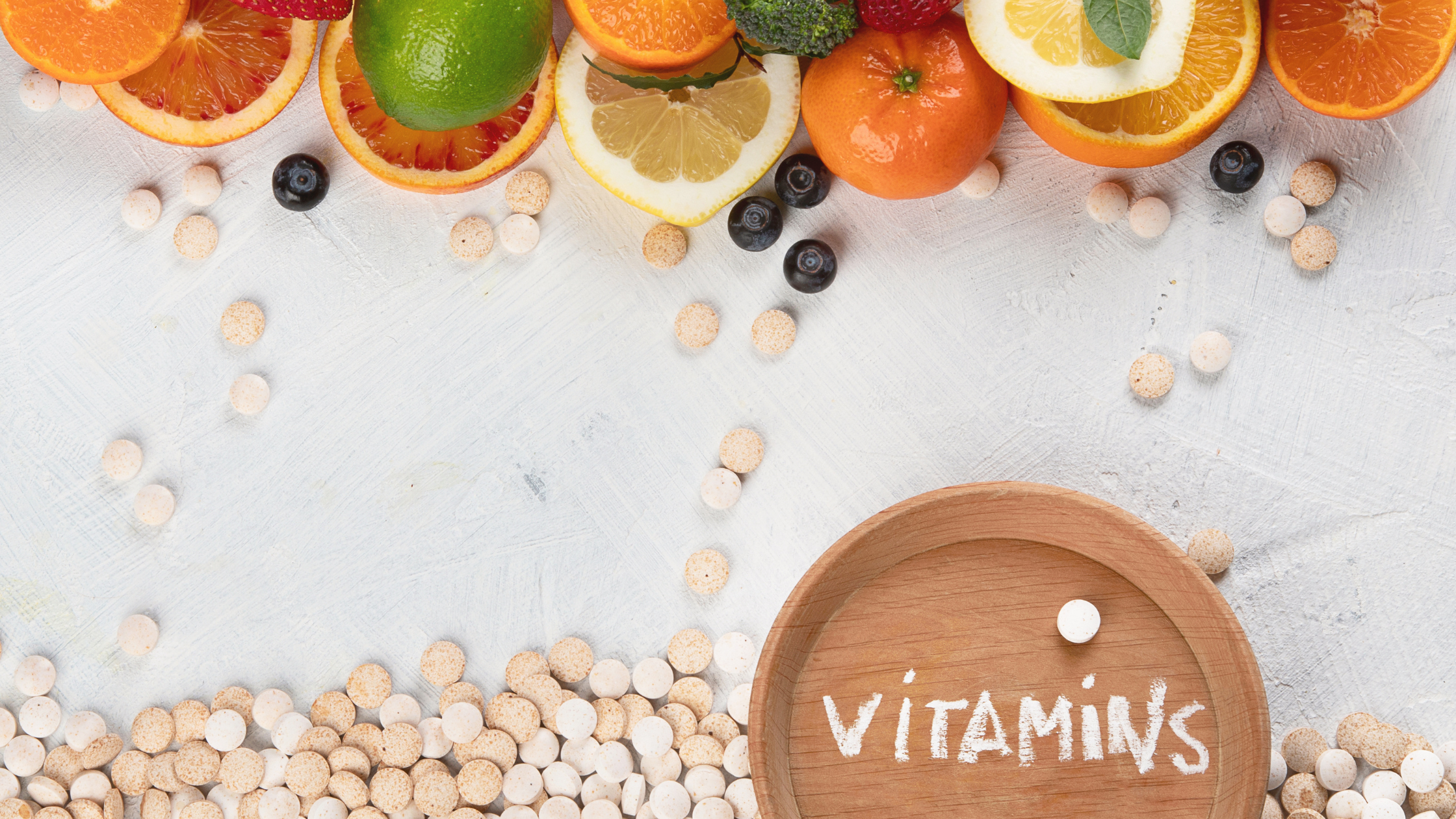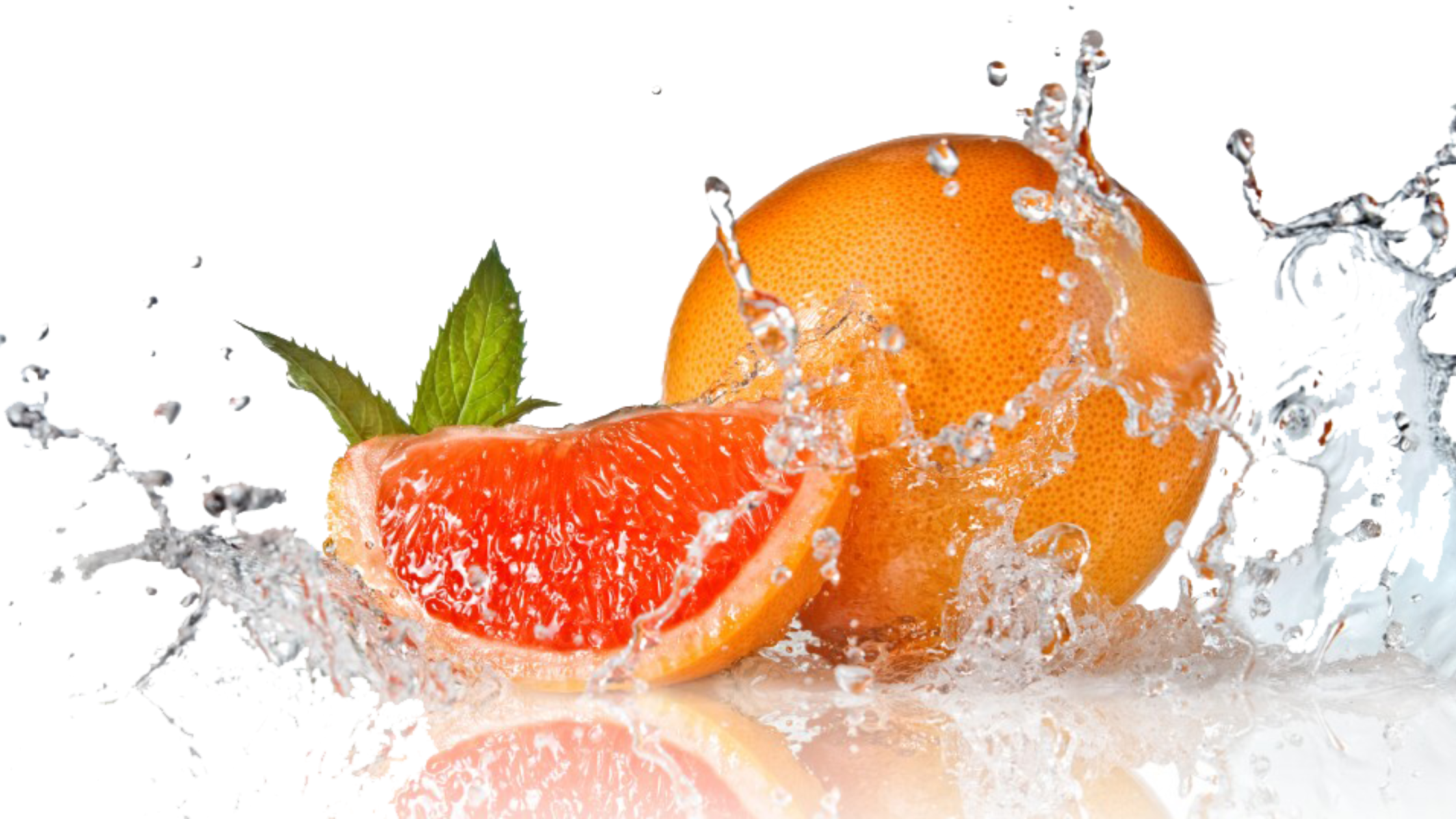
By Jenny Perez
As healthcare providers and conscious consumers, it's essential to understand the impact of pesticide residues on health and how to minimize exposure. Glyphosate, the active ingredient in Monsanto's Roundup, is extensively used in American agriculture, with around 280 million pounds sprayed annually on conventionally grown food crops.i,2
Since 1993, the Environmental Working Group (EWG) has shined a spotlight on outdated legislation, harmful agricultural practices, and industry loopholes that pose a risk to our health and the health of our environment. 3,4
One of their most invaluable resources is the annually published Shopper’s Guide to Pesticides in ProduceTM which informs consumers about pesticide residue levels in fruits and vegetables through the Dirty Dozen and Clean Fifteen list of commonly consumed produce. This guide is crucial for reducing exposure to endocrine-disrupting chemicals, which can have significant health implications.
Recognizing Environmental Factors Silently Impacting Health
As discussed in our blog on signs of infertility, exposure to Endocrine-Disrupting Chemicals (EDCs) from pesticide residues, harmful chemicals found in daily-use products, and cumulative microplastics can disrupt the delicate balance of the hormone-driven endocrine system and interfere with central nervous system development and function.
Hormones and their proper messaging systems contribute to the normal development, adaptation, and maintenance of bodily processes and overall health. By interfering with hormones and their actions, EDC exposure directly interferes with hormones and their message-delivery system, impacting many health-related functions, and increasing risks of many serious conditions.
The Endocrine Society reports that EDCs, including those found in pesticide residues, contribute to serious health conditions such as reproductive disorders, metabolic syndrome, poor cardiovascular system function, and even cancer. Specifically, pesticides like glyphosate have been linked to adverse reproductive health outcomes and possess many characteristics of EDCs, indicating a broad impact on human health.5 These chemicals pose particularly serious risks to pregnant women and children.
Understanding the sources and mechanisms of EDCs is crucial for mitigating their impact on health, emphasizing the need for stricter regulations and greater public awareness to reduce exposure.
Inside the 2024 Shopper’s Guide to Pesticides in Produce: Minimizing Intake is a Must
It is no surprise that the fruits and vegetables that made the Clean Fifteen list have thicker skins, hard rinds, or some naturally protective layer that significantly reduces contact contamination and permeation of pesticide residues and waxes into the fleshy portion of these edibles.
Close to 65% of the Clean Fifteen had no detectable pesticide residues, with avocados and corn ranking as the cleanest produce, with less than 2% of the tested samples showing detectable pesticides.4
Quick Facts on the Clean Fifteen and Dirty Dozen
Keep in mind these facts and research details when discussing the 2024 Shopper’s Guide to Pesticides in Produce with your patients: 4
- The Clean Fifteen and Dirty Dozen lists are based on EWG analysis of test data provided by the U.S. Department of Agriculture (USDA) and U.S. Food and Drug Administration (FDA) on 47,510 samples of 46 different fruits and vegetables.
- Before testing produce for pesticide residues, the USDA peels and washes it according to its recommendations for cleaning at home. The FDA, however, only brushes off dirt contamination before testing.
- Testing by these agencies revealed traces of 254 pesticides on their fruit and vegetable samples – with 209 of these pesticides found on the Dirty Dozen produce.
- The produce on the Clean Fifteen list have very low or no pesticide residues.
Produce samples are evaluated based on six key measures of pesticide contamination and then ranked based on the cumulative score: 4
- Percent of samples with detectable pesticides.
- Percent of samples with two or more detectable pesticides.
- Average number of pesticides found on a single sample.
- Average amount of pesticides found, in parts per million.
- Maximum number of pesticides found on a single sample.
- Total number of pesticides found on the crop.
Details and resources on the 2024 Clean Fifteen and Dirty Dozen can be accessed using the following links:
- Full list of 46 fruits and vegetables evaluated by the EWG
- EWG methodology
- The USDA Pesticide Data Program
- Fridge or wallet list of the Shopper’s Guide to Pesticides in Produce
- EWG’s report summary with Clean Fifteen and Dirty Dozen lists
The Clean Fifteen and Dirty Dozen Explained
The Clean Fifteen includes produce with the lowest pesticide levels. Items like avocados, sweet corn, and pineapples often have thick skins or peels that protect them, making them safer choices for those concerned about pesticide exposure.
However, the silver lining from the 2024 Clean Fifteen and Dirty Dozen list is that close to 65% of sampled fruits and vegetables were free from detectable pesticide residue.4
Of the 46 analyzed fruits and vegetables, 15 are ranked as clean: 4
- Avocados
- Sweet corn
- Pineapple
- Onions
- Papaya
- Sweet peas (frozen)
- Asparagus
- Honeydew melon
- Kiwi
- Cabbage
- Watermelon
- Mushrooms
- Mangoes
- Sweet potatoes
- Carrots
On the other hand, The Dirty Dozen list highlights produce with thin skin or no skin at all and retain the highest pesticide residues, such as strawberries, spinach, and apples.
For 2024, the EWG discovered that 75% of all sampled produce had potentially harmful pesticide residue. Each sample item on the Dirty Dozen list was tested to have a minimum of 13 pesticides, with some having as many as 23.
Of the 12 fruits and vegetables on the Dirty Dozen list, 95% of the samples contained pesticides. 4
Leafy greens, particularly kale, collard, and mustard greens, topped the list with 103 detected pesticides. Hot and bell peppers were a close second with 101 detected pesticides.1
These figures might seem alarming, but there's a solution. We can significantly reduce our potential chemical exposure by purchasing organically grown counterparts for the most contaminated produce items. This choice empowers us to make informed decisions about our health and well-being.
Of the 46 analyzed fruits and vegetables, these 12 were the most contaminated: 4
- Strawberries
- Spinach
- Kale, collards, and mustard greens
- Grapes
- Peaches
- Pears
- Nectarines
- Apples
- Bell and hot peppers
- Cherries
- Blueberries
- Green Beans
Something is Better Than Nothing
Eating a variety of fruits and vegetables is crucial for maintaining good health. However, pesticide contamination poses a significant risk. The reality is, that access to and the cost of organic produce can be a barrier for many consumers, particularly in low-income communities.
While the EWG's Shopper's Guide provides essential information about pesticide levels in non-organic produce, it can also provoke alarm and anxiety. The terms "dirty" and "clean" may lead people to question the value of eating a wide variety of fruits and vegetables due to fears of pesticide exposure. Research from the Illinois Institute of Technology in Chicago shows that low-income shoppers who learn about the differences between organic and non-organic produce may be less likely to consume any produce at all.
It's crucial to emphasize that all produce, including non-organic, offers significant health benefits and is a healthier choice than processed foods. Currently, most Americans do not consume enough daily servings of fruits and vegetables, falling short of the recommended intake. Analysis of USDA data reveals that some fruits and vegetables contain pesticide levels exceeding safe limits. This highlights the importance of not reducing overall produce intake but instead making informed choices about which produce to consume and in what form.
Given the potential risks and gaps in our understanding as well as the consumption of fresh, seasonal produce, it is prudent to err on the side of caution. Eating a wide variety [JP2] of fruits and vegetables is one of the best ways to minimize elevated exposure to one pesticide.6 Reducing pesticide exposure by choosing organic produce or items from the Clean Fifteen can help safeguard health, especially for vulnerable populations.
The Broader Implications for Health
Since EDCs come from many different sources, people are exposed in several ways, including the air we breathe, the food we eat, and the water we drink. EDCs also can enter the body through the skin. Most EDC chemicals are fat-soluble, difficult to metabolize, and therefore stored in fat tissues, where they can accumulate, causing greater and greater hormone dysregulation.
Some EDCs act like "hormone mimics" and trick our bodies into thinking that they are hormones, while other EDCs block natural hormones from doing their job. Other EDCs can increase or decrease the levels of hormones in our blood by affecting how they are made, broken down, or stored in our bodies. Finally, other EDCs can change how sensitive our bodies are to different hormones.
Because of EDCs and their cumulative harmful effects, the Endocrine Society has published a practitioner resource to help educate patients and average consumers about this silent epidemic.8 This informative resource can be accessed at the link below:
In addition to utilizing the EWG’s Shopper’s Guide to Produce, the Endocrine Society also recommends the following precautions to help keep food and families safe.
- Food and Water
-
- Thoroughly wash fruits and vegetables before consuming them.
-
-
- Use only water to clean your fruits and vegetables. Produce has pores and soap may get trapped in these pores.
- Place all produce in a strainer and rinse under flowing water. This is more effective than immersing produce in water.
- Spray softer and fragile produce like grapes, strawberries, or blueberries with water in a strainer.
- Use a brush to clean solid or firm produce such as potatoes, melons, or carrots.
- Dry your produce with a clean cloth or paper towel.
- Do not consume the outer leaves of leafy greens such as cabbage, iceberg lettuce, or romaine lettuce.
- Peel conventionally grown produce with thin skins, such as apples, carrots, peaches, or pears. 8,9,10
-
-
- Don’t microwave plastic food containers or use them for storing hot liquids.
- Avoid plastic containers designated #3, #6, and #7.
- Reduce consumption of canned and processed foods.
- Use glass, porcelain, or stainless-steel containers, whenever possible, especially for hot food and drinks.
- Prepare more meals at home and emphasize fresh ingredients.
- Consider using a water filter. If possible, purchase organic produce, meat, and dairy products.
- Replace older non-stick pans with newer ceramic-coated pans.
- Eat a diversified diet with plenty of variety.
Knowledge is Power – Choose Wisely, Choose Health
Healthcare practitioners can use The Endocrine Society’s and EWG's consumer-focused resources to inform and guide patients, especially vulnerable populations like children and pregnant women, who are more sensitive to the effects of pesticides.
Despite the higher cost of organically grown produce, anyone can significantly reduce their exposure to potentially harmful chemicals by choosing items from the Clean Fifteen and opting for organic produce options of those listed on the Dirty Dozen.
For individuals struggling with infertility and other endocrine-related health challenges, this is an opportunity for practitioners to help assess the environmental burdens caused by low-grade, cumulative exposure to Endocrine-Disrupting Chemicals in their diets, personal care products, and cleaning products. Discussing the potential benefits of including liver and detoxification support protocols and effective formulas that contain milk thistle seed and chlorella may be helpful.
Milk thistle seed (Silybum marianum) and chlorella (C. vulgaris) share several common properties that benefit detoxification protocols. They both possess potent antioxidant and anti-inflammatory properties, support liver health, aid in removing toxins (including heavy metals), and provide essential nutrients that bolster overall health and immune function.11 These combined effects help to optimize the body's natural detoxification processes, making them popular choices in detox regimens.
Be the Change – The Future is in Our Hands
Raising more awareness about pesticides in our food system and supporting people in making healthy dietary choices is more important than ever. Understanding and utilizing the EWG's Fridge or wallet list of the Shopper’s Guide to Pesticides in Produce can empower individuals to make better food choices, support healthier dietary habits, and encourage sustainable farming practices.
By using the guidelines provided by consumer advocacy groups like the EWG, and The Endocrine Society to select safer produce options, each of us can significantly reduce exposure to harmful EDCs while reaping the significant health benefits of a diet rich in fruits and vegetables and boosting exposure to a broader array of beneficial phytonutrients from cleaner, organically grown produce whenever possible.
By staying informed and making careful choices, healthcare practitioners and consumers can promote healthier, safer eating habits. This knowledge contributes to overall well-being and long-term health, making it an essential tool for both healthcare providers and conscious consumers. Overall, the value of a balanced, whole-food, minimally processed diet that includes a wide variety of fruits and vegetables is a message we all need to share.
‡ The products and claims made about specific products on or through this Site have not been evaluated by the United States Food and Drug Administration and are not approved to diagnose, treat, cure, or prevent disease. Remind your patients to browse the Clean Fifteen and Dirty Dozen lists before shopping.
‡ This Site is not intended to provide diagnosis, treatment, or medical advice. Products, services, information, and other content provided on this Site, including information that may be provided on this Site directly or by linking to third-party websites are provided for informational purposes only. Please consult accredited healthcare professional organizations, evidence-based herbal monographs, and published clinical research regarding any medical or health-related diagnosis or treatment options.
References:
- U.S. Right to Know. https://usrtk.org/pesticides/glyphosate-use-in-food-crops/. Accessed May 20, 2024.
- Environmental Working Group (EWG) News & Insights. https://www.ewg.org/news-insights/news/glyphosate-spreading-cancer-across-us. Accessed May 20, 2024.
- Environmental Working Group. “Our Mission.” https://www.ewg.org/who-we-are/our-mission. Accessed March 25, 2024
- Environmental Working Group. “EWG’s 2024 Shopper’s Guide to Pesticides in ProduceTM.” https://www.ewg.org/foodnews/summary.php. Accessed March 25, 2024.
- Endocrine Society. Press Release, February 26, 2024 Latest Science Shows Endocrine Disrupting Chemicals in Plastics, Pesticides, and Other Sources Pose Health Threats Globally https://www.endocrine.org/news-and-advocacy/news-room/2024/latest-science-shows-endocrine-disrupting-chemicals-in-pose-health-threats-globally. Accessed on May 18, 2024.
- National Pesticide Information Center. “Minimizing Pesticide Residues in Food.” http://npic.orst.edu/health/foodprac.html. Accessed March 25, 2024
- Hormones and Endocrine Disrupting Chemicals – What You Need to Know. An Endocrine Society Patient Resource. https://www.endocrine.org/patient-engagement/endocrine-library/edcs. Accessed on May 20, 2024.
- National Pesticide Information Center. “Minimizing Pesticide Residues in Food.” http://npic.orst.edu/health/foodprac.html. Accessed March 25, 2024.
- National Pesticide Information Center. “How Can I Wash Pesticides from Fruit And Veggies?” http://npic.orst.edu/faq/fruitwash.html. Accessed March 25, 2024.
- United States Environmental Protection Agency. “Pesticides and Food: Healthy, Sensible Food Practices.” https://www.epa.gov/safepestcontrol/pesticides-and-food-healthy-sensible-food-practices. Accessed March 25, 2024.
- Modulation of Metabolic Detoxification Pathways Using Foods and Food-Derived Components: A Scientific Review with Clinical Application. https://www.ncbi.nlm.nih.gov/pmc/articles/PMC4488002/
Jenny Perez is an herbal educator, researcher, and writer who has been immersed in the field of nutrition and botanical medicine for more than 20 years. Jenny has created curriculum, content, and educational materials for Quantum Nutrition Labs, Premier Research Labs, the American Botanical Council, and Bastyr University’s Botanical Medicine Department where she was Adjunct Faculty, Herb Garden Manager, and Director of the Holistic Landscape Design certificate program.









